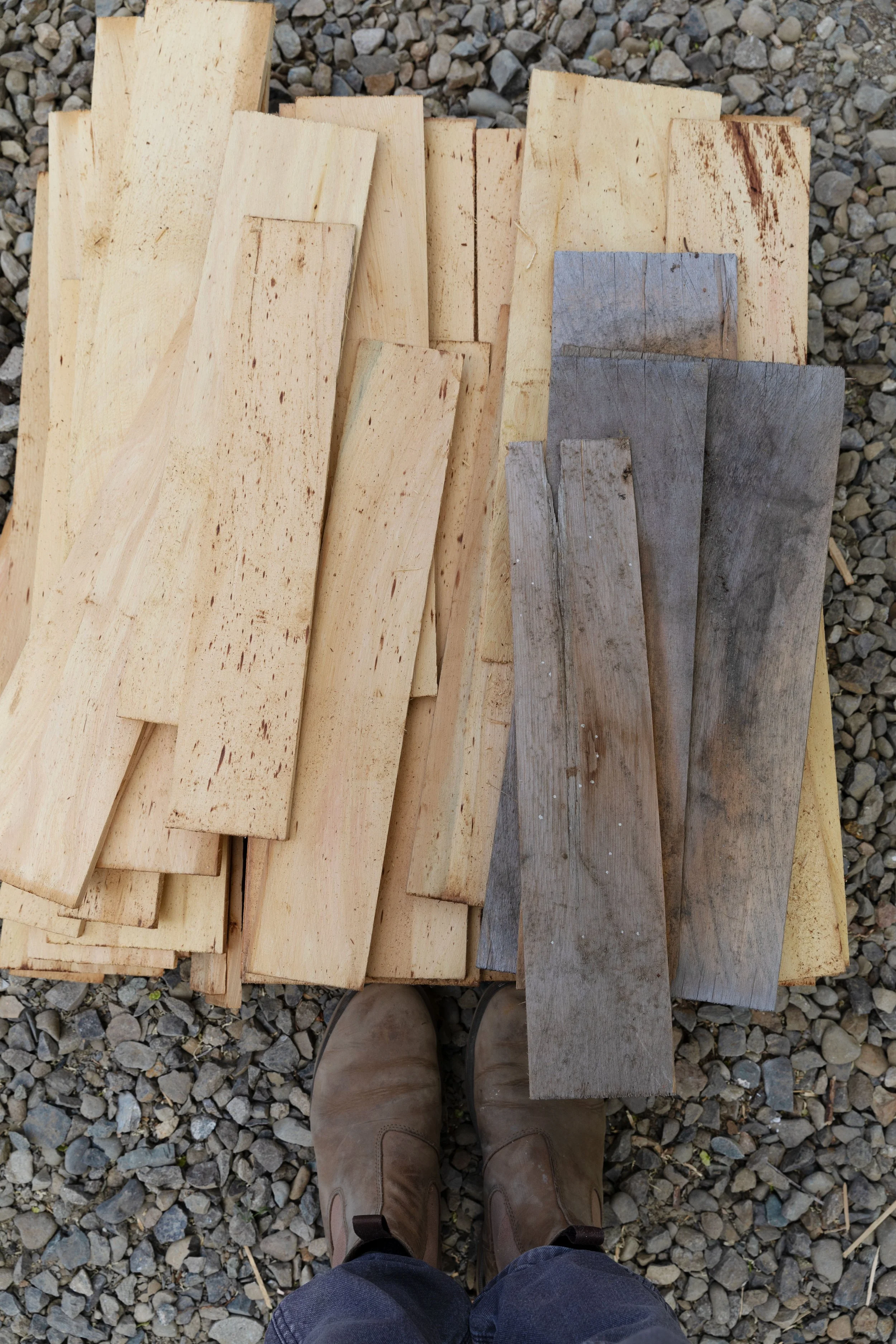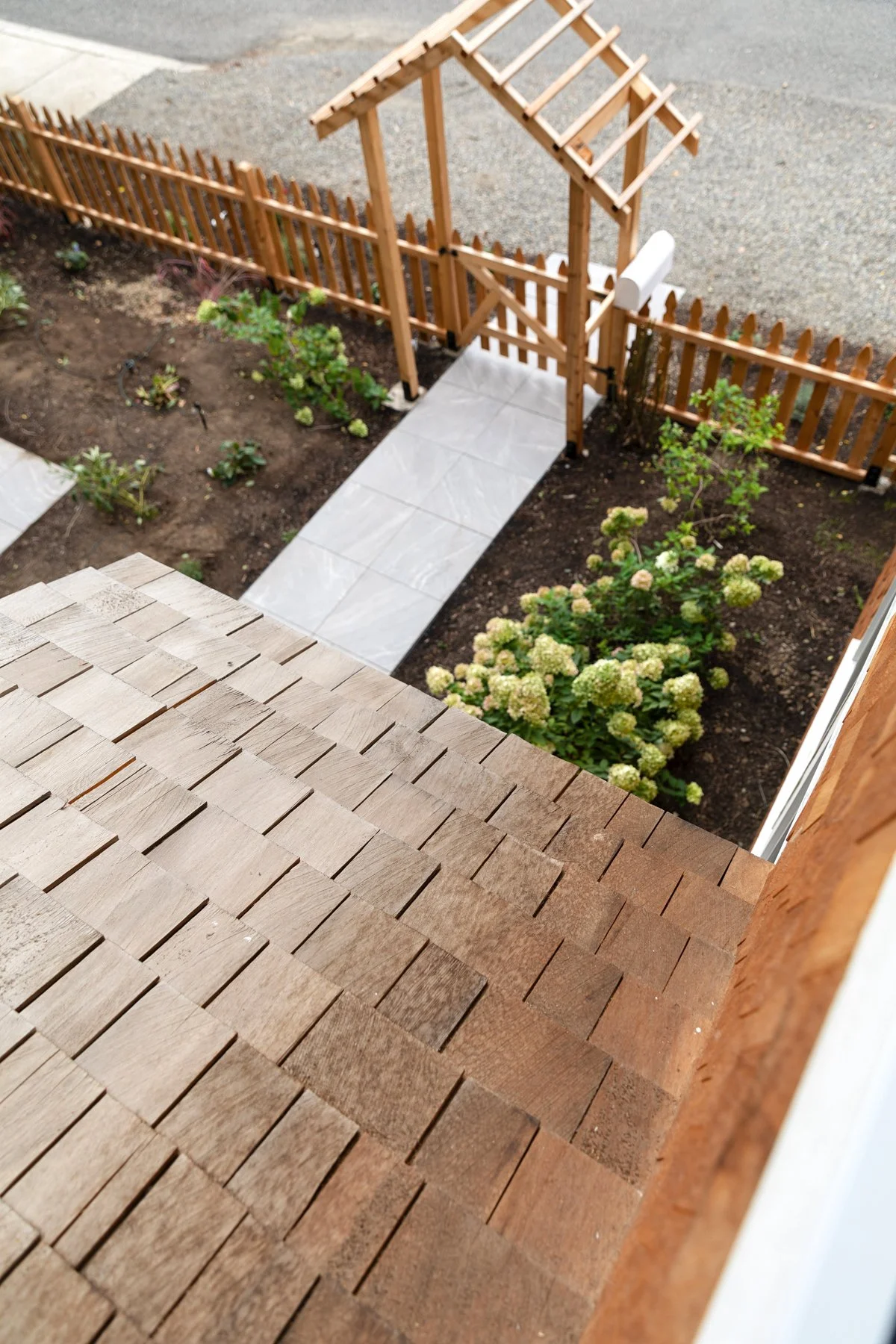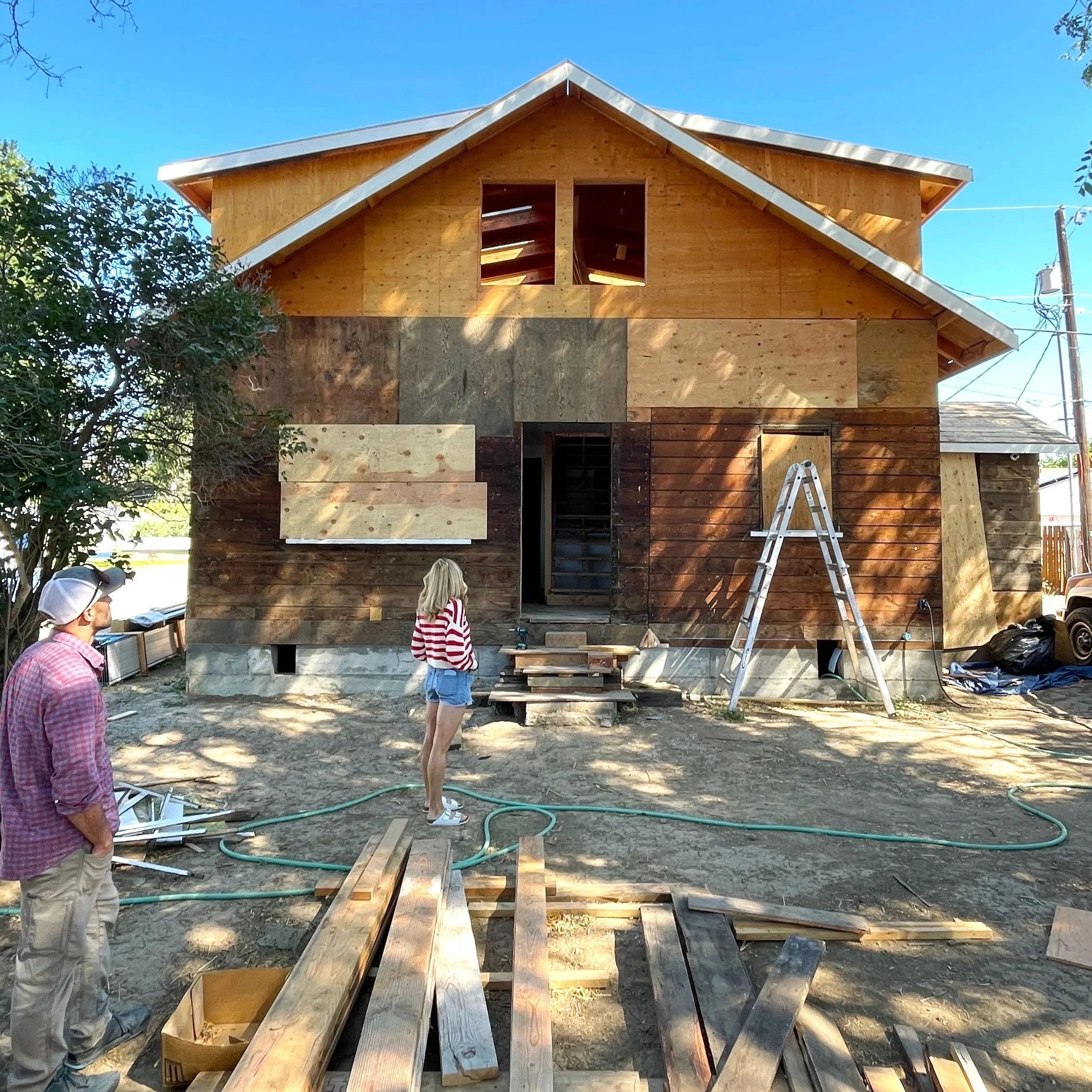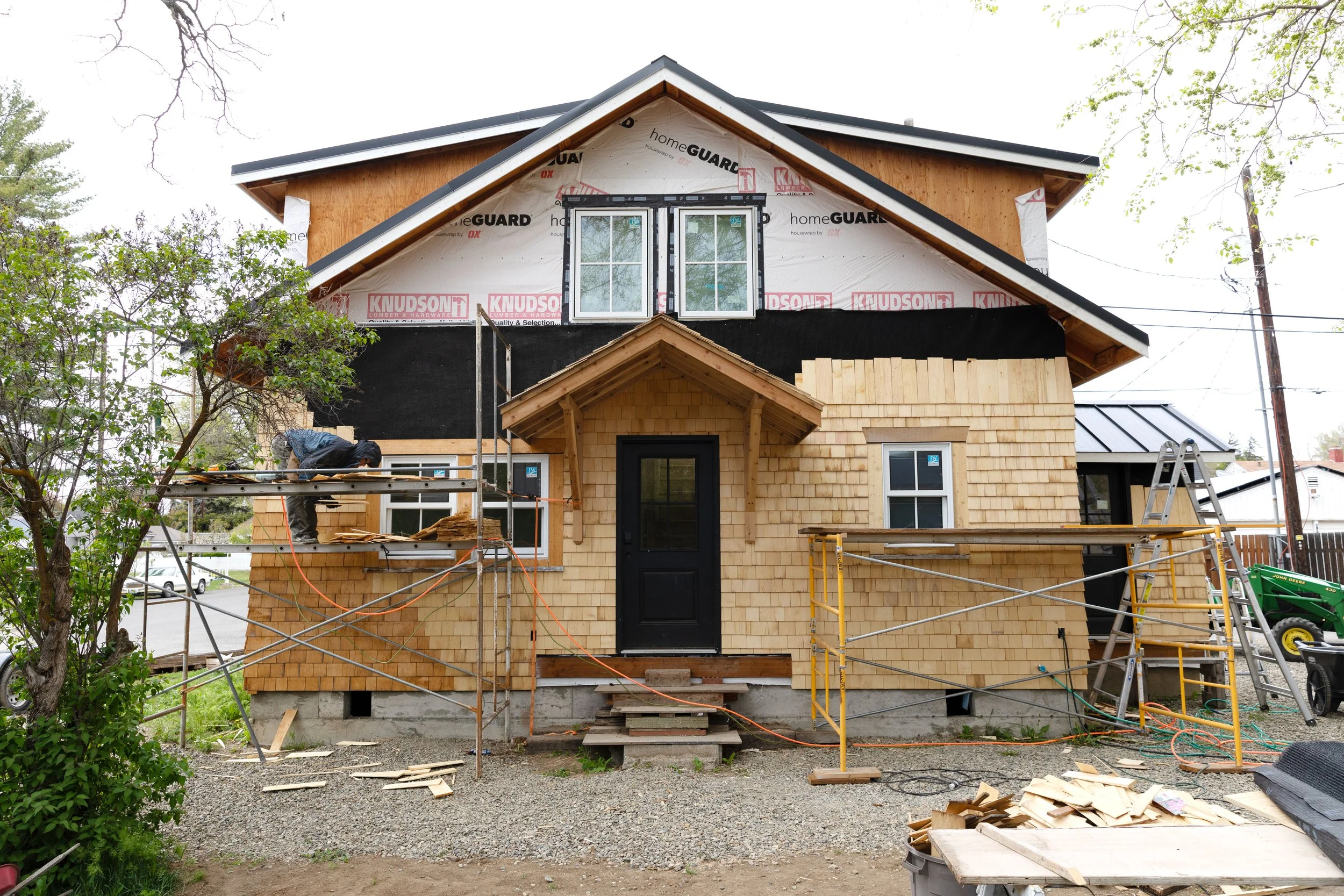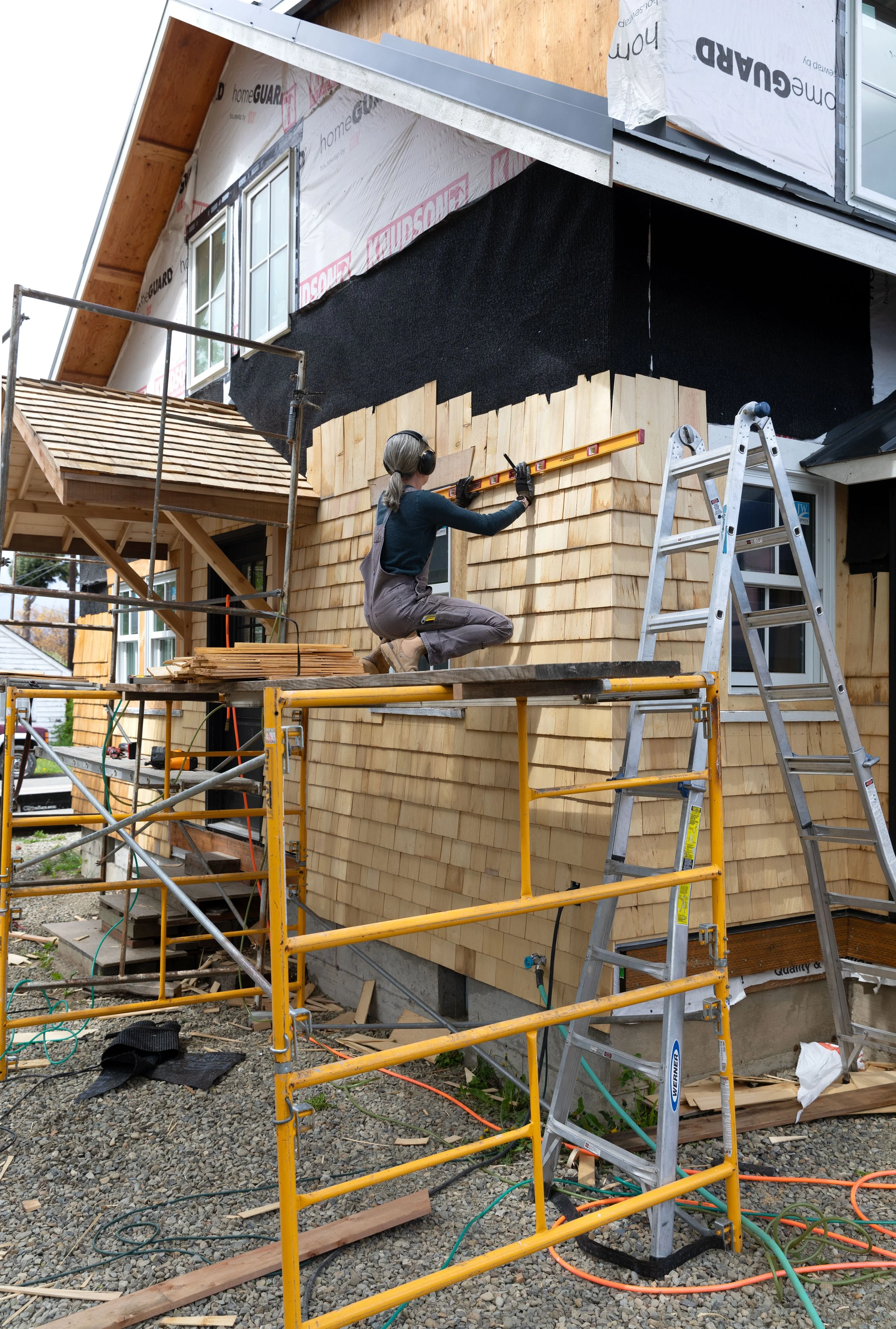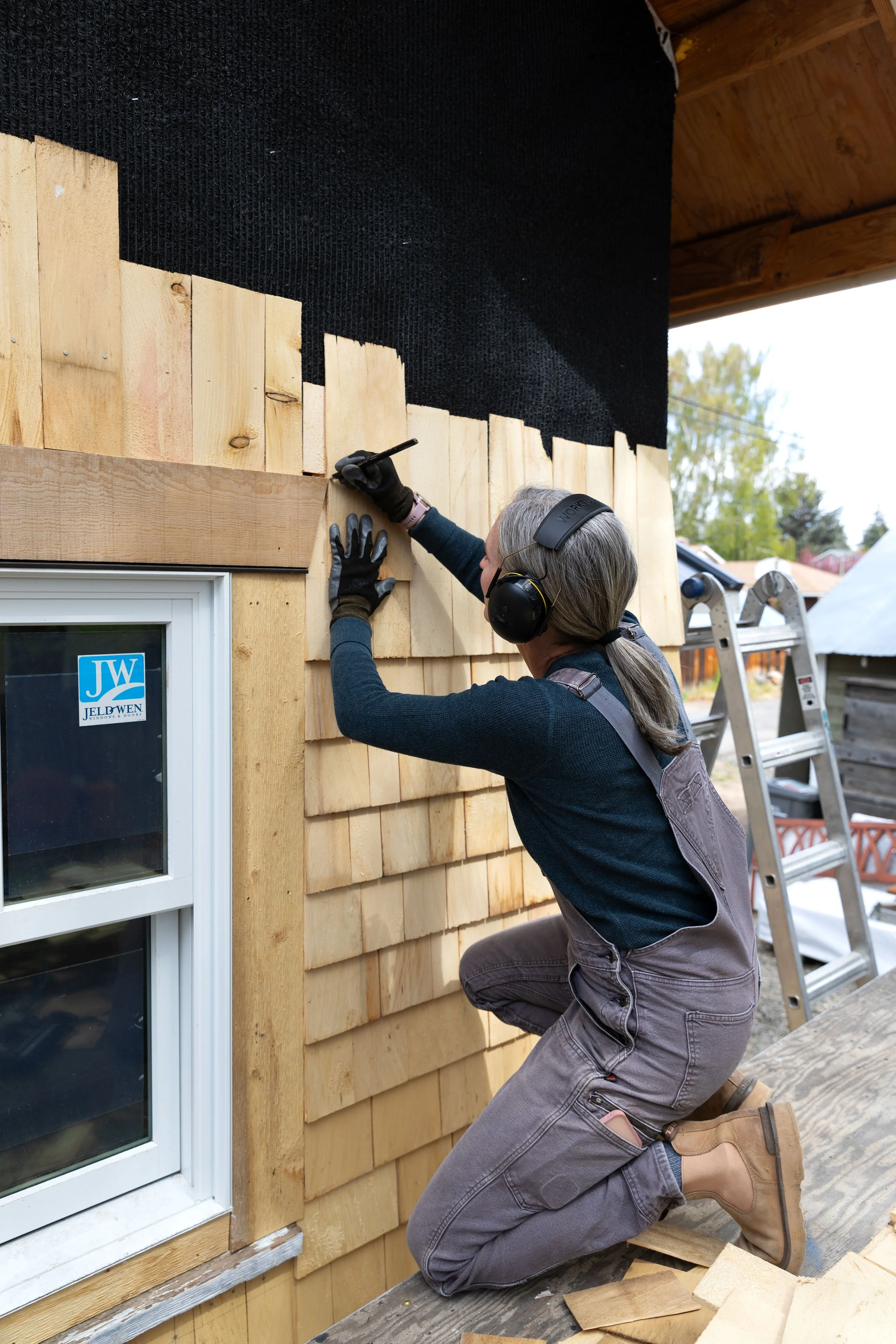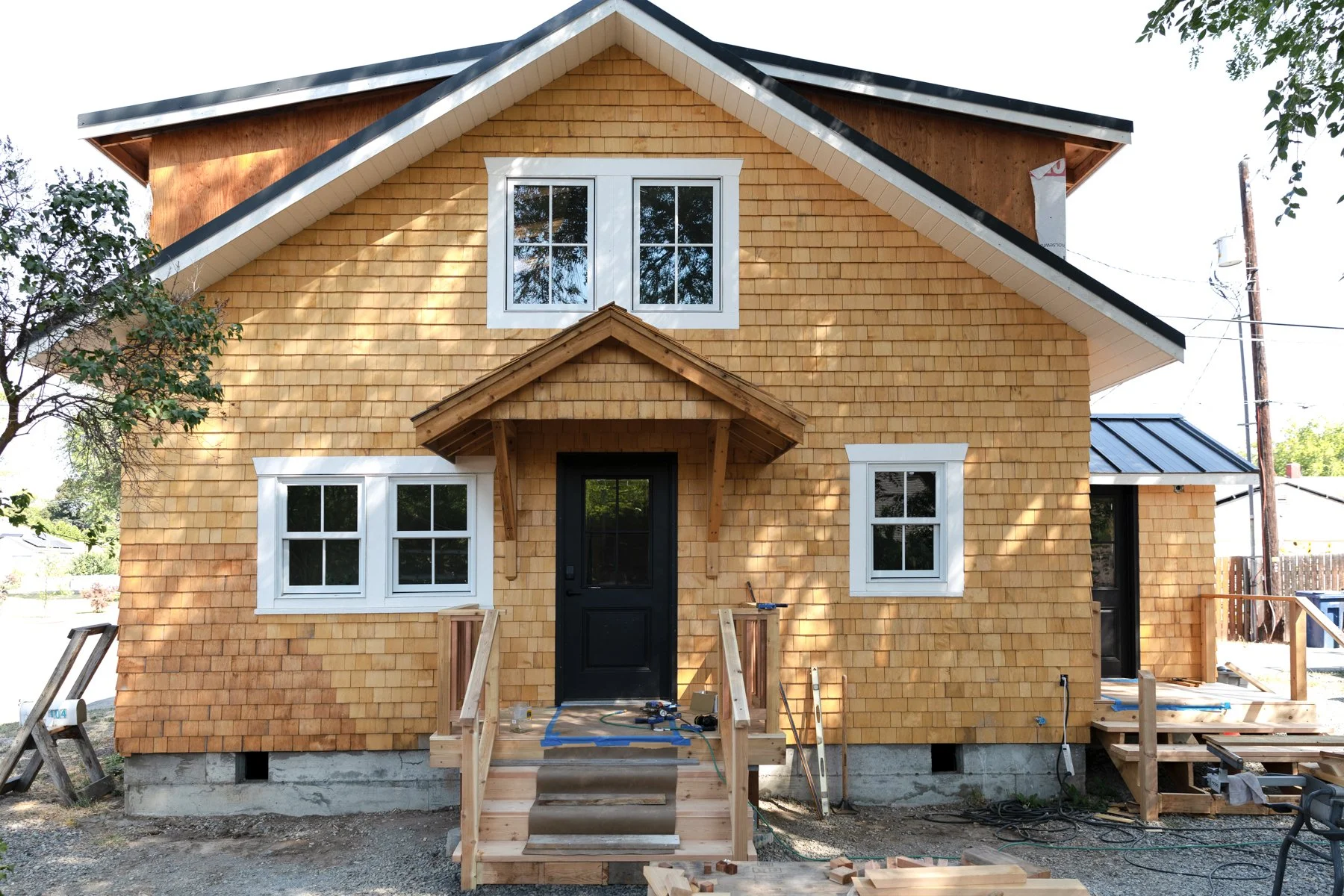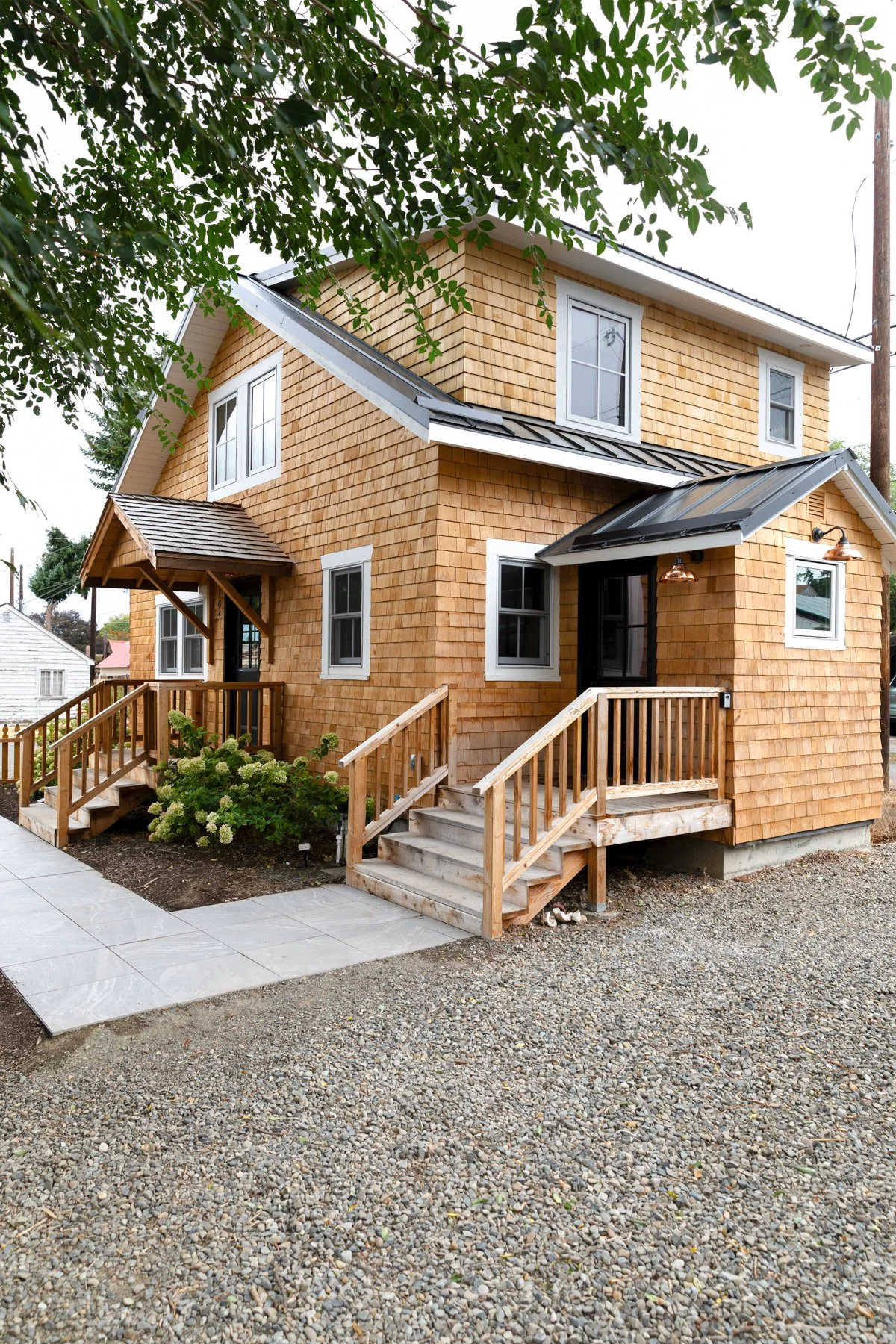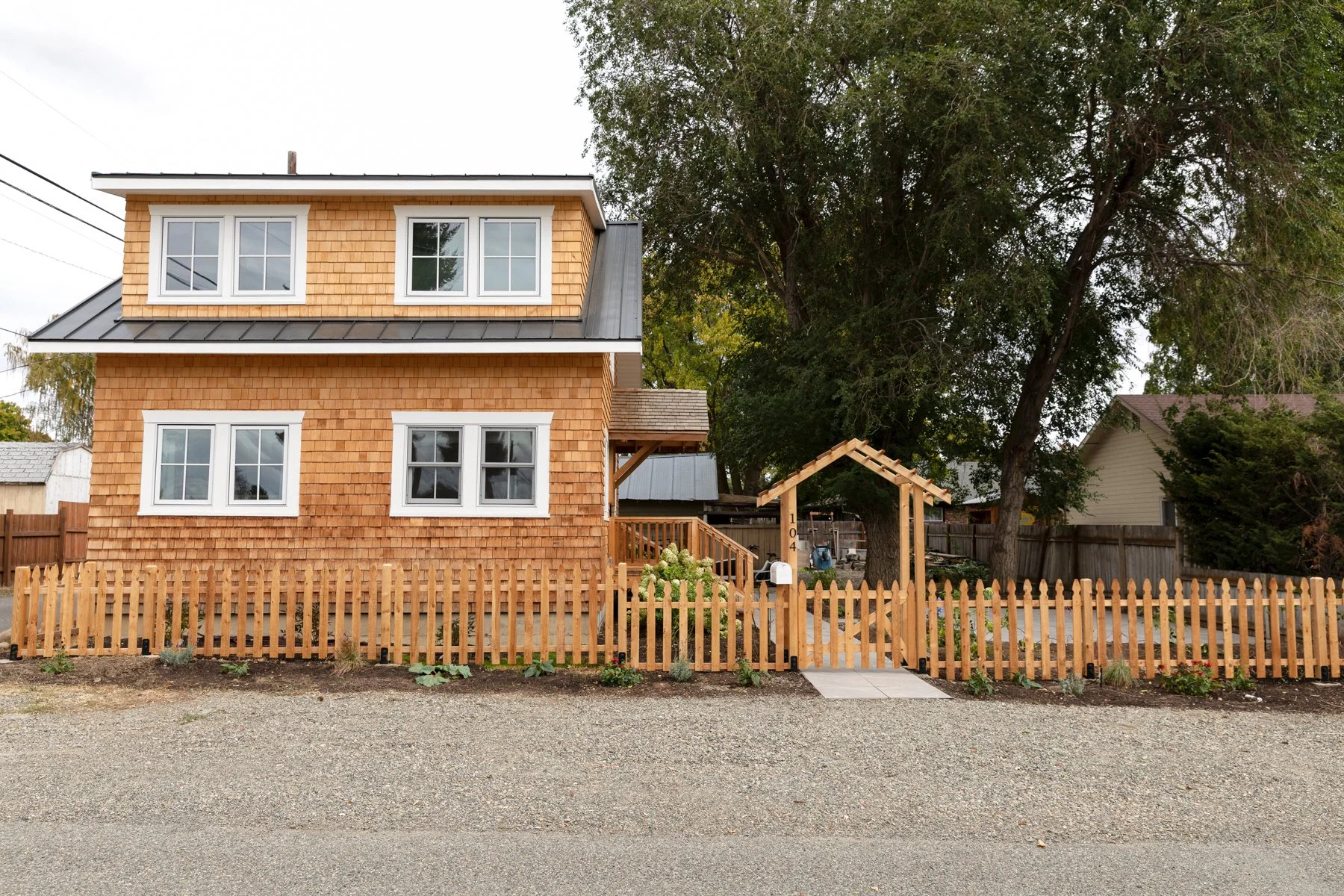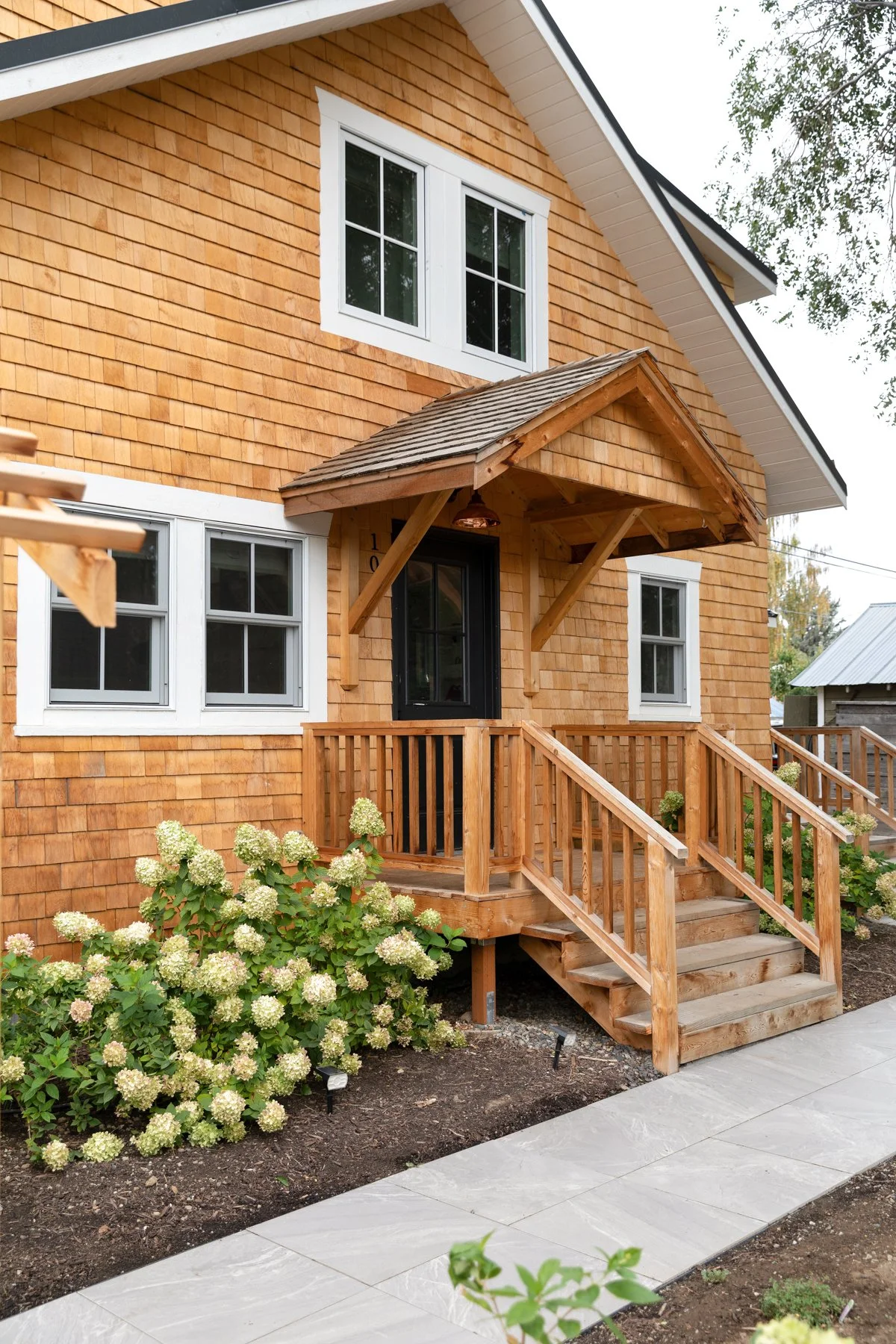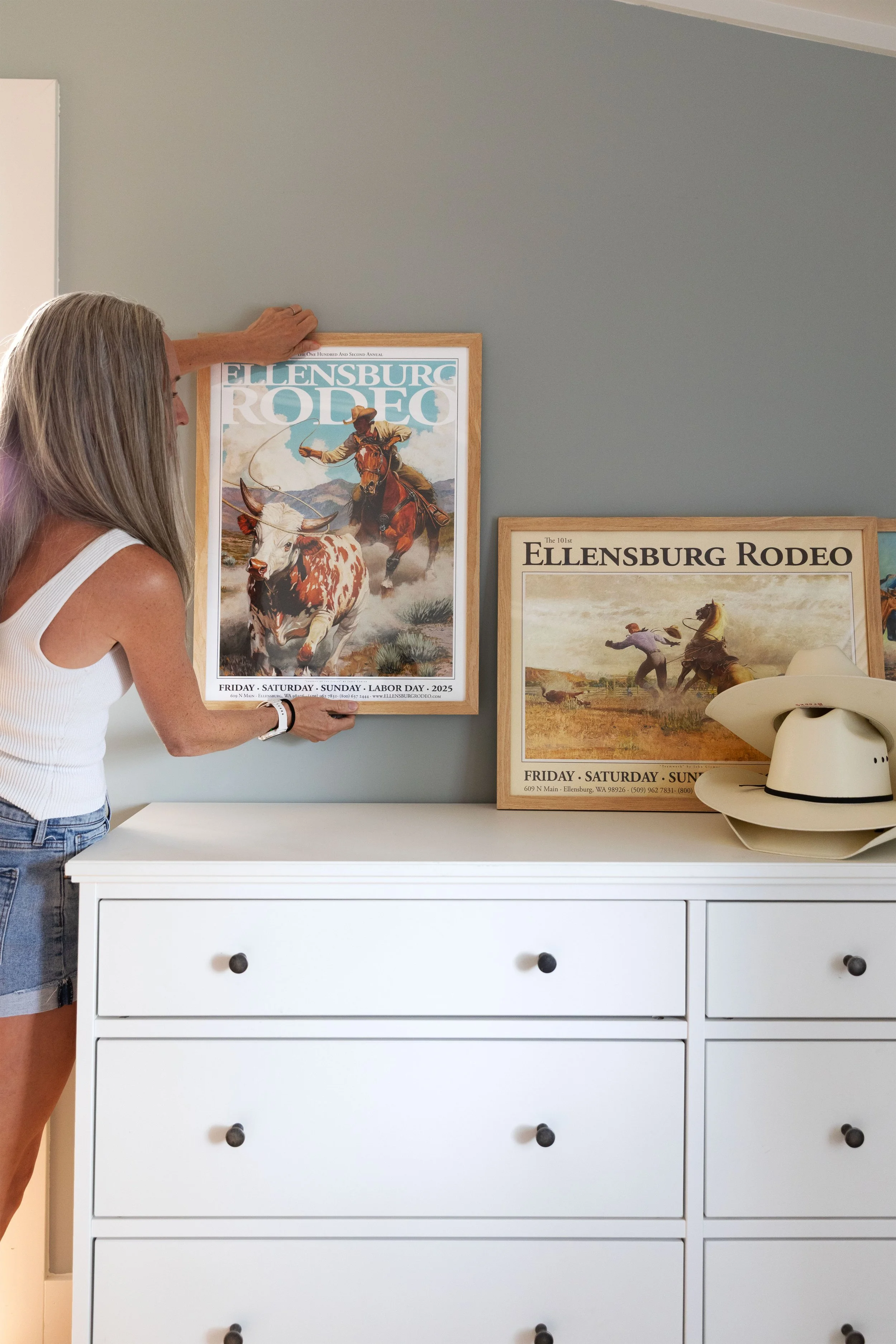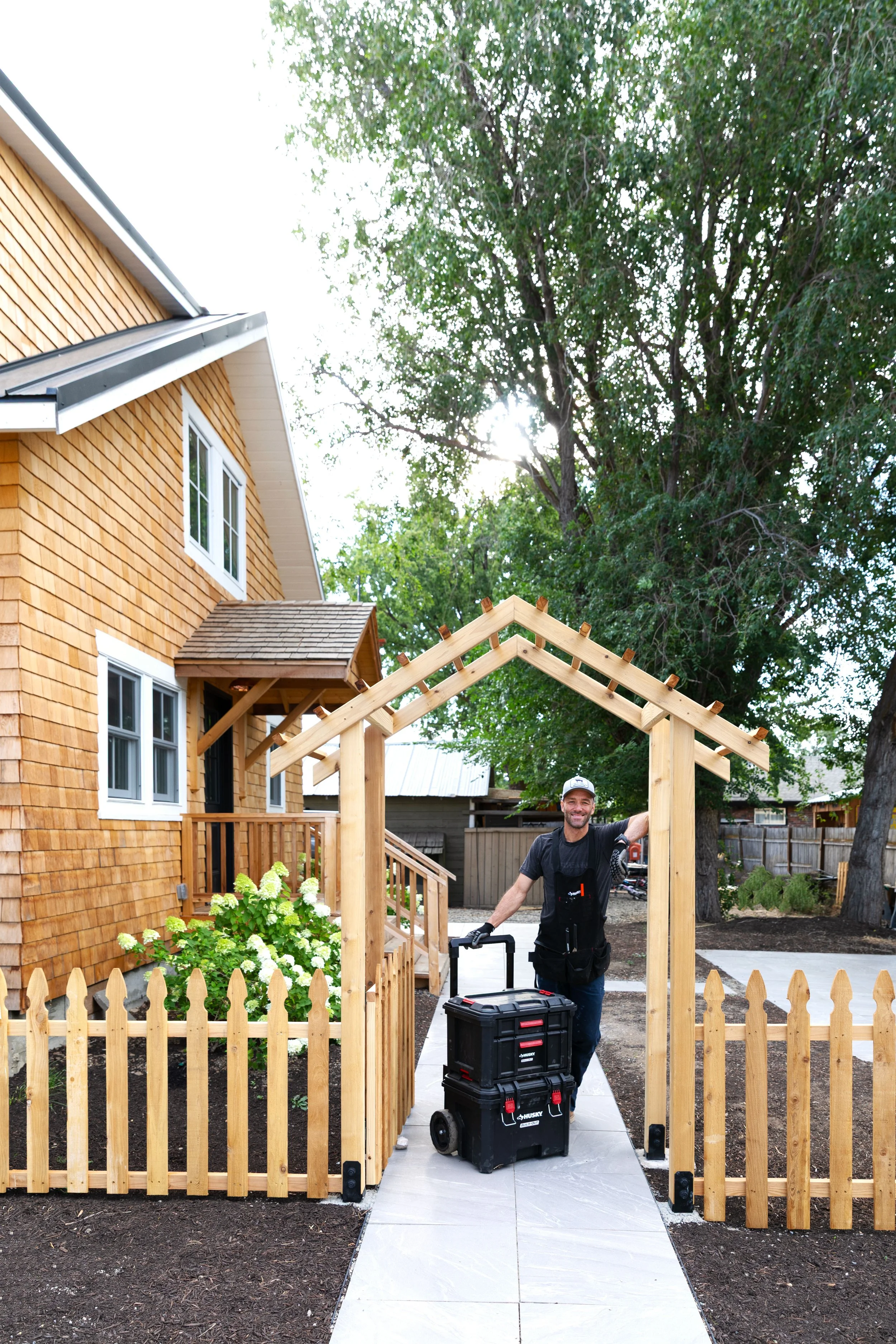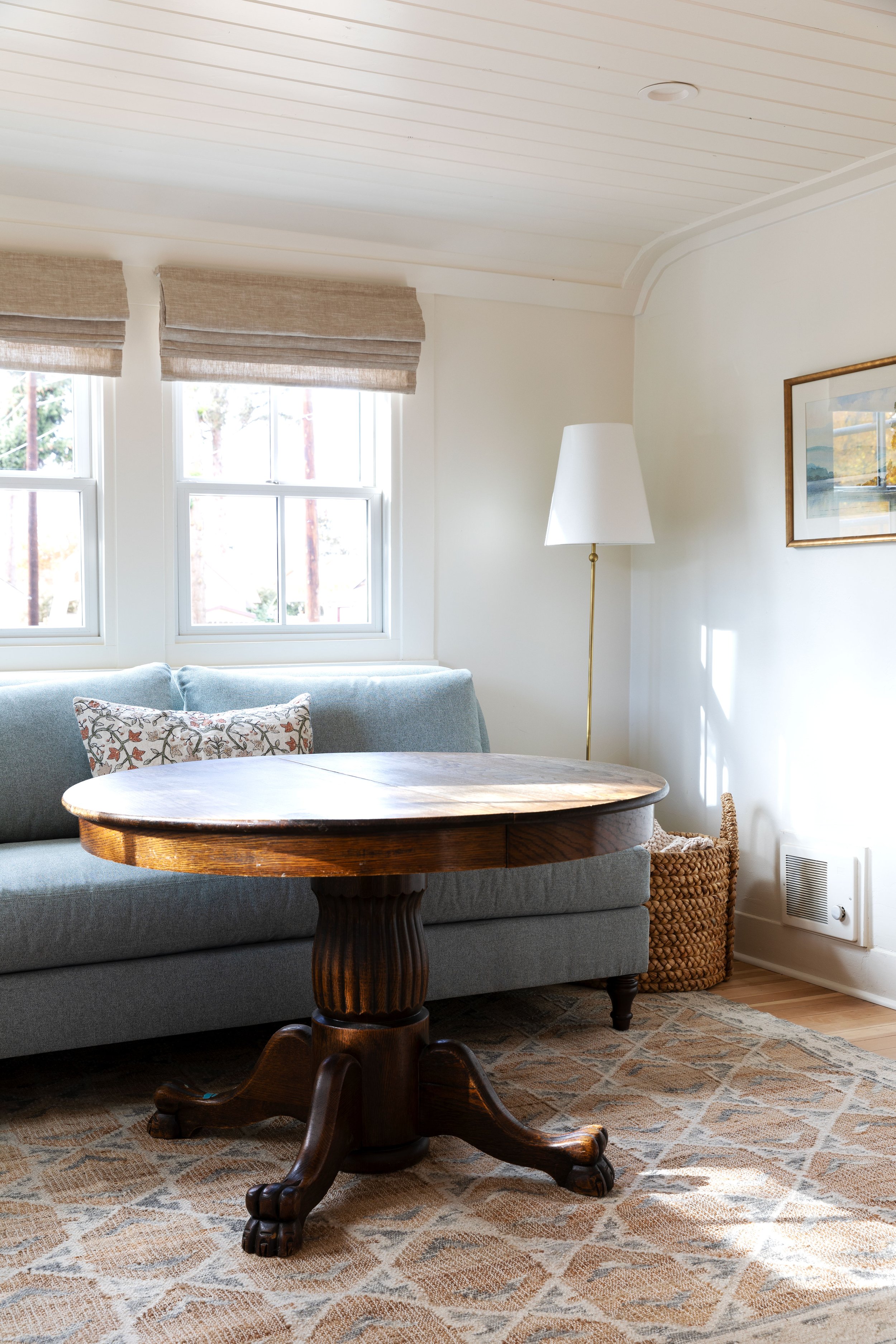The Cedar Shake Siding Reveal at the Poplar Cottage (It's DONE!)
THE POPLAR COTTAGE
The cedar shake siding is done at the Poplar Cottage after years of work, and it turned out beautifully! When we first started imagining what this exterior could be, I knew real wood shake was in the cards. It’s authentic, timeless, and what was originally on this house some 100 years ago.
Was it a lot of work? Absolutely! More work than we could have ever imagined back in the Spring of 2023. But standing here at the finish line, we just can’t imagine this house with anything else. Today I’m sharing the why, what, and how of our cedar shake siding, including what it cost, what installation looked like, and how it should age over time. Plus tons of photos of this project we’re so very proud of. Let’s get into it…
doors, windows, light, numbers, pavers
In case you missed anything, here’s a recap of Poplar’s exterior transformation (including lifting the house 8-feet into the air to pour a new foundation and tearing off the second story):
What was wrong with the foundation + hiring a house lifter 😱
The Poplar Cottage’s NEW concrete foundation and what it cost
New wood-clad windows and doors
Pavers & the evolution of the exterior
Why We Chose Cedar Shake Siding
The Poplar Cottage is 100 years old (or thereabouts) and our goal with this renovation has always been to honor its history and bring back some of the old-house charm that was stripped away over the years. Real wood shake siding was on the original exterior so it’s what we wanted for the renovated exterior. Wood shake lends a sense of character, authenticity, and timelessness to an exterior that you just can’t get with manufactured siding, especially on an old house like this!
Our siding is Alaskan Yellow Cedar, which is technically a cypress species and not a true cedar. But it has many of the same properties as cedar, including the natural oils that make the wood highly durable outdoors, repel insects, and age to a gray when left untreated. Alaskan yellow cedar has been historically used for boatbuilding and decking in damp climates so it’s a great option for siding. It a local species too, growing along the Pacific Northwest coast, and into Alaska, hence the name.
When Garrett stumbled across bundles of Alaskan Yellow Cedar shakes on Facebook Marketplace, it felt meant to be. The shakes were:
Locally sourced and milled
Affordable
Perfectly imperfect (we opted for a “paint grade” so these are full of variation and texture)
We originally thought we’d paint the siding. But as each shake went up, we fell hard for the natural look.
So, how will it age?
How cedar shake siding ages
Our siding is completely untreated - there’s no stain or finish of any kind. Natural cedar (and Alaskan Yellow Cedar) is rot, insect, and moisture resistant, so it really doesn’t require a finish. When it first went up, the fresh wood was a warm golden blonde but over time it’s darkened and it should continue to patina and age naturally to a beautiful silver/gray color like the photo below. The exterior should feel very storybook throughout the process - think New England coastal home!
Note that the aged pieces below came with one of the bundles we bought and had obviously been sitting in the mill’s yard for quite some time. The mill we bought from is located near Seattle, which means these were hit with a TON of rain. Here on the east side of the Cascade mountains, we get a lot less precipitation so our shakes could age differently, but it gives us an idea.
Here’s what we expect from aging based on what we’ve seen so far and what we’ve read…
Year 1: Golden honey tones
Years 2–5: Gradual fading and mellowing to soft taupe
5+ years: Even, silvery-gray patina (if left untreated)
Pro tip: untreated shake siding in full sun will age faster than areas in partial or full shade. You can also expect more color variation in shaded areas like north-facing walls, porch overhangs, and any wind-protected areas. A light water rinse with a garden hose in the spring can help the shaded areas develop a more even patina.
You can see how the sun is aging our gable roof much quicker in the image below. The exposed shake is turning gray and has worn smoother over the past year than anywhere else on the house. I love the look!
Here’s another example of one year of age. The image below shows the front of the house (facing due south) - the darker siding on the left was put up in Spring 2023 and the right side was put up Spring 2024, just before taking the photo.
Installation: A True Labor of Love
Installing cedar shake siding is not for the faint of heart. Each piece of shake goes up one at a time - carefully selected, nailed, and overlapped. Multiply that by every wall of a two-story house, and you’ve got yourself a multi-year DIY project. Eeek! We started this project in Spring 2023 and finally wrapped it up in September 2025, so it took us 2.5 years (though it was one of many projects during that time!).
Here’s our basic process:
Prep the Walls: We installed house wrap and a breather layer to protect against moisture.
Starter Course: This first row is critical and we made sure it was perfectly level.
Shake by Shake: Each piece was nailed individually, alternating widths and avoiding vertical seam overlap.
Scaffolding: For the upper levels, we borrowed scaffolding (thanks, Uncle Greg!).
Corners & Trim: Matched cedar trim pieces finished off windows and doors cleanly.
Even though the work was time-consuming, it was surprisingly straightforward - just slow, repetitive, and deeply satisfying. A meditative project, if there ever was one, and we caught up on many audio books and podcasts while working ;)This kind of craftsmanship is really why I love old houses and it brought me a lot of joy to give it back to this century-old cottage!
Here’s what the exterior siding process looked like…
What the cedar shake siding cost
We sourced our shakes through a local mill (Marketplace for the win!) but I expect it would have cost over double (triple?) to buy it through a lumber store. Here’s what we spent on our siding…
Alaskan Yellow Cedar Shakes + trim $7100
Nails $728
Nail Gun $247
Misc tools & supplies $500
Total $8,575
Not in these numbers, of course, is the hours and hours of work. I can’t imagine what a contractor would charge for this kind of time-consuming installation, but it would definitely be in the 5 figure range. I’ve said it before and I’ll say it again, cedar shake is almost surely the most labor-intensive siding out there. It’s a labor of love rather than a choice made for financial or time reasons.
Maintenance + Paint Options
Cedar shakes siding require very little maintenance if left natural. Here’s our plan for upkeep:
Occasional rinse with a garden hose to keep debris and pollen from building up
Monitor for any cracked or warped shakes (replace as necessary)
Let nature do her job and age the shake gracefully over time
And if we ever decide to change the look? We can paint or stain the siding years down the road.
Would we do it again?
This siding project was part patience and part persistence, but we really love it. Real wood just belongs on the Poplar Cottage! It honors the house’s history and gives it the warm, classic look we imagined from the start.
Was it time-intensive? Yes.
Would we do it again? Yes. I think ;)
The finished exterior is warm, textured, and draws compliments from everyone who walks by. It’s unique and stunning. But gosh that was a long two-and-a-half-year project!
If you’re dreaming of cedar shake siding for your own home, here’s what we’d tell you:
It’s a commitment!!!
There’s nothing like real wood - it gives the house a soul you can’t get with manufactured siding.
It looks timeless on old houses and new builds, too.
It’s one of the few exterior materials that gets better with age, but you’ve got to love imperfection (I say the same thing about honed marble and unlaquered brass!).
Cedar Shake Siding FAQ
A few commonly asked questions about cedar shake siding…
How long does cedar shake siding last?
With proper installation and basic maintenance, cedar shake siding should last decades and decades - 50 years or more. Alaskan Yellow Cedar, in particular, is naturally resistant to rot and insects, making it a great long-term exterior material.
Do cedar shakes need to be sealed or painted?
Nope! Cedar doesn’t need to be sealed or painted, although you can (look at Gil Schafer’s work and you may want to!). Many homeowners like us leave it natural to let it weather to a silvery patina. But if you prefer a painted or stained look, you can apply a finish before installation or later down the road.
Can you pre-age cedar?
Yes! An inspector mentioned to us that when he worked on custom homes in Montana, they’d age the newly-installed shake using a spray-on application of ferrous sulphate (ferrous sulphate is just an iron salt - I actually used to take it as a supplement when running high miles in college). The ferrous sulphate reacts with the wood’s natural tannins to accelerate the graying process.
What’s the difference between cedar shakes and shingles?
Cedar shakes are split from logs, giving them a more textured, rustic look. Shingles are sawn smooth and have a more uniform, polished appearance. Shakes are ideal for a cottage or historic home aesthetic.
👉 Save this post to Pinterest for later.
What a project! What a cottage!
xx
ps we may receive a small affiliate commission if you purchase something through our links, at no cost to you. Thank you for supporting the Grit and Polish!






